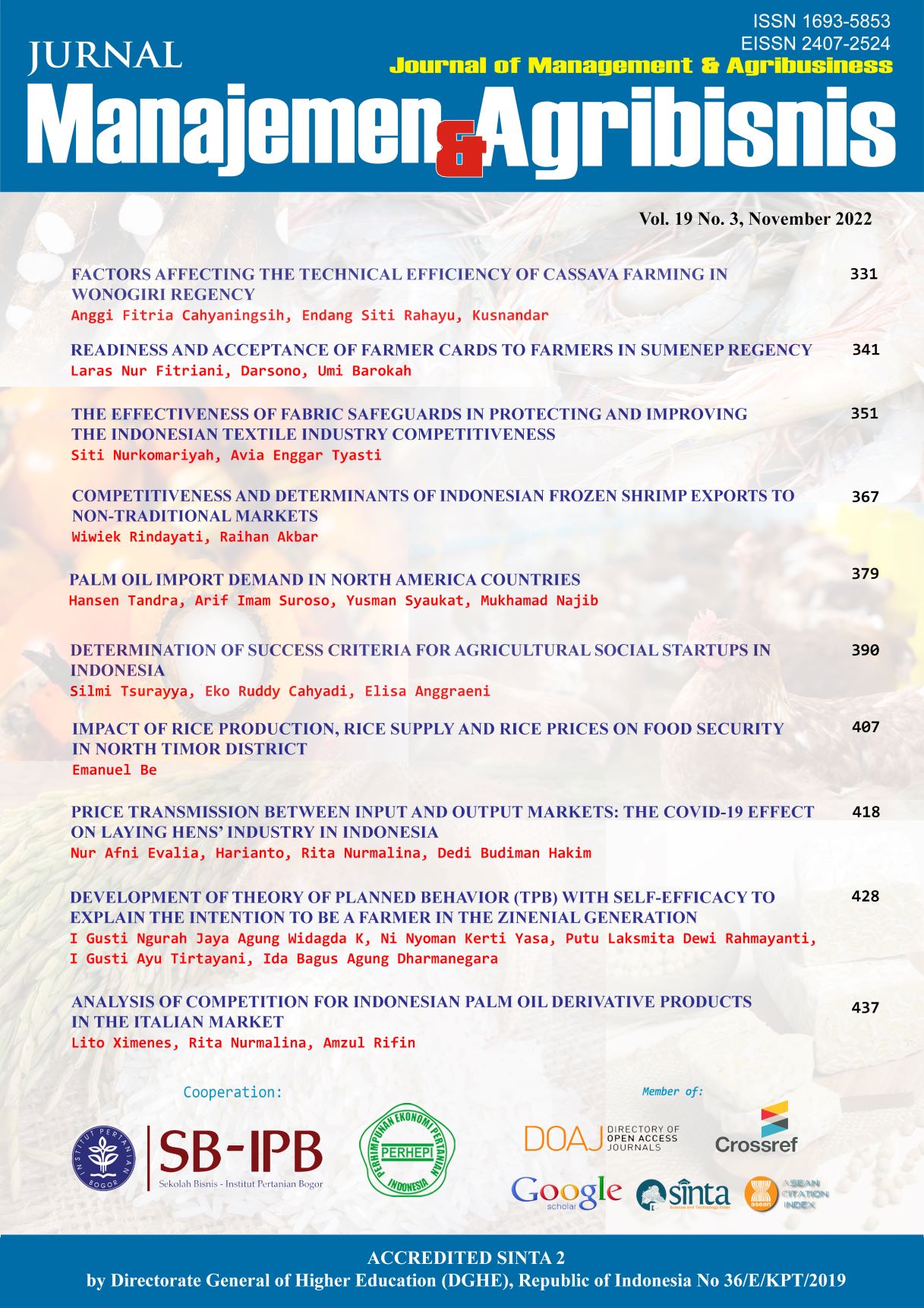Development of Theory of Planned Behavior (TPB) With Self-Efficacy to Explain The Intention To Be A Farmer in The Zinenial Generation
Abstract
The purpose of this study was to develop a theory of planned behavior (TPB) that explains the intentions of Generation Z farmers using self-efficacy variables. The population of this study is Gen Z from Bali. The sample size used was 210 with the planned sampling method. The analysis technique used is path analysis by SEM-PLS. Results showed that attitudes did not affect willingness to farm. Subjective norms and PBC had a positive and significant effect on intention to become a farmer, attitudes, and self-efficacy between subjective norms and PBC. and it made a big impression. , and self-efficacy can act as mediators of attitudes, subjective norms, and the impact PBC has on their intent to become a Gen Z farmer in Bali. It is therefore important that government, educational institutions and parents understand that farming is a good career, the more self-efficacy a person has towards farming, the easier it is for someone to get into it Enter Farming Farmer So You Can Encouraged Gen Z have big intentions to become farmers. Likewise, the availability of land and farming skills must find a solution so that they continue to improve in order to increase the intention to become a farmer in the Z generation.
Keywords: attitude, subjective norm, PBC, self-efficacy, intention to become a farmer
Authors
Authors who publish with this journal agree to the following terms:
- Authors retain copyright and grant the journal right of first publication with the work simultaneously licensed under a Creative Commons Attribution License that allows others to share the work with an acknowledgement of the work's authorship and initial publication in this journal.
- Authors are able to enter into separate, additional contractual arrangements for the non-exclusive distribution of the journal's published version of the work (e.g., post it to an institutional repository or publish it in a book), with an acknowledgement of its initial publication in this journal.
- Authors are permitted and encouraged to post their work online (e.g., in institutional repositories or on their website) prior to and during the submission process, as it can lead to productive exchanges, as well as earlier and greater citation of published work (See The Effect of Open Access).

